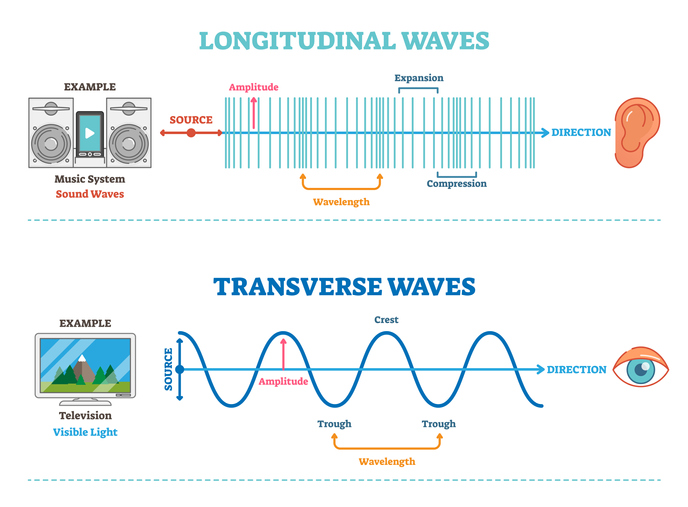Wave Motion and types of Waves
Wave MotionA wave is the transfer of energy and momentum, in form of disturbance, from one part of a medium to another without the actual transfer of particles of the medium from one point to anoth...

All waves are reflected, refracted, diffracted and show the phenomenon of interference like light waves.
Reflection of Sound: Like light waves, sound waves are reflected from a plane surface obeying the law of reflection, i.e. making an angle of incidence equal to the angle of reflection.
That is, ∠i = ∠r
In our daily life, we can hear the sound reflected from surfaces like walls, mountains, ground, clouds, etc. In big halls, it is easy to hear a reflected sound. The multiple reflections of the sound of lightning produce the rolling sound of thunder.
Refraction of Sound: Sound wave is refracted like lightwave when traveling through a non-uniform medium. This is due to the fact that the speed of sound is different in different mediums.
Due to the refraction of sound, we can hear sounds easily at night than during clear days. On a clear day, the lower layer of the atmosphere is hotter than the layers above. Since sound travels faster in a hotter medium, its speed is greater near the surface. As a result, the waves are bent away from the surface. Thus, the intensity of the sound waves diminishes and does not seem to travel a long distance. On a clear night, the lower layer of the atmosphere is colder than the air above. Now, the sound waves travel faster at the higher layers than at the lower layers. Thus, the waves are bent towards the earth's surface. The intensity of the sound increases and seems to travel a greater distance.
Diffraction of Sound: The spreading of waves when they pass through a very small aperture or around obstacles of the size of the wavelength of the waves is called diffraction. Light waves are diffracted only through a very small aperture because the wavelength of light waves is of the order of 10-7m. But the wavelength of a sound wave is large, maybe comparable to openings like doors and windows; therefore, sound waves are diffracted round wide openings. As a result, we can hear sound from a source behind our vision.
Interference of Sound: The interference phenomenon can be observed when two or more waves of the same frequency overlap. This is according to the principle of superposition. If crest and crest or trough and trough arrive at a point from two sources, the resultant wave has a large amplitude. It is called constructive interference. If crest and trough from two sources reach a point, they will cancel each other and the resultant amplitude will decrease. This is called destructive interference.